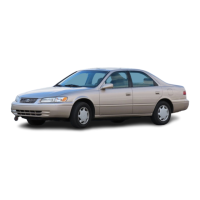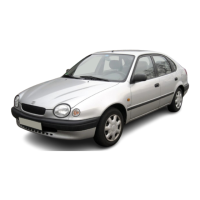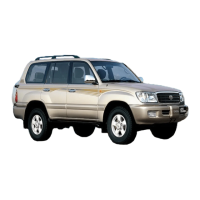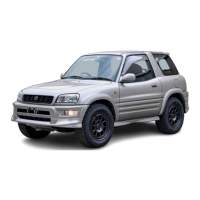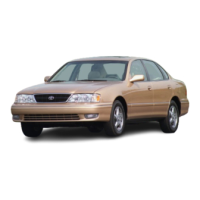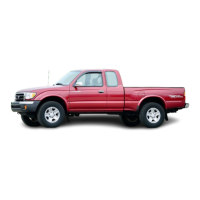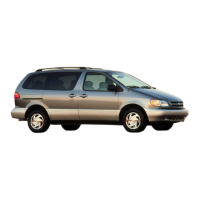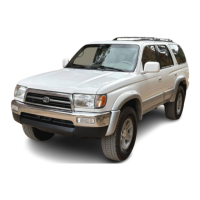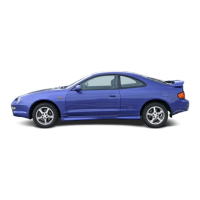Do you have a question about the Toyota 1998 Celica and is the answer not in the manual?
Covers instrument panel, cluster, symbols, keys, doors, windows, and convertible top operations.
Guidance on proper seating, seat belt usage, steering wheel, and mirror adjustments.
Operation of lights, wipers, defogger, fuel gauge, coolant temp, tachometer, and warning indicators.
Details ignition switch, transmission, parking brake, cruise control, audio, and climate control systems.
Instructions for clock, cigarette lighter, glovebox, cup holder, luggage cover, and floor mat.
Recommendations for new vehicle break-in, fuel type, and general driving advice.
Details on the brake system, luggage loading, and descriptions of different tire types.
Information on VIN, theft labels, and safety warnings regarding engine exhaust fumes.
Essential checks before starting and normal engine starting procedures.
Advice for driving in different conditions like crosswinds, hills, and winter weather.
Comprehensive guide on trailer towing, weight limits, and tips for saving fuel.
Troubleshooting for engine starting problems, jump-starting, and engine stalls.
Actions for overheating, changing a flat tire, and recommendations for towing the vehicle.
Procedures for overriding transmission lock, manual convertible top operation, and lost keys.
Methods to prevent corrosion and guidelines for washing and waxing the vehicle.
Instructions for cleaning various interior surfaces like vinyl, carpets, and windows.
Overview of maintenance importance, requirements, and regular vehicle checks.
Clues that suggest a vehicle may need adjustment or repair.
Overview of DIY maintenance, engine compartment, fuses, parts, tools, and precautions.
Procedures for checking engine oil, coolant, tires, wheels, battery, fuses, and lights.
Table of dimensions, weight, engine details, fuel, and service specifications.
Information on tire sizes, pressures, wheel sizes, and fuse details.
Procedure for reporting vehicle safety defects and contact information for NHTSA.
Explanation of tire grading factors: Treadwear, Traction, and Temperature.
Covers instrument panel, cluster, symbols, keys, doors, windows, and convertible top operations.
Guidance on proper seating, seat belt usage, steering wheel, and mirror adjustments.
Operation of lights, wipers, defogger, fuel gauge, coolant temp, tachometer, and warning indicators.
Details ignition switch, transmission, parking brake, cruise control, audio, and climate control systems.
Instructions for clock, cigarette lighter, glovebox, cup holder, luggage cover, and floor mat.
Recommendations for new vehicle break-in, fuel type, and general driving advice.
Details on the brake system, luggage loading, and descriptions of different tire types.
Information on VIN, theft labels, and safety warnings regarding engine exhaust fumes.
Essential checks before starting and normal engine starting procedures.
Advice for driving in different conditions like crosswinds, hills, and winter weather.
Comprehensive guide on trailer towing, weight limits, and tips for saving fuel.
Troubleshooting for engine starting problems, jump-starting, and engine stalls.
Actions for overheating, changing a flat tire, and recommendations for towing the vehicle.
Procedures for overriding transmission lock, manual convertible top operation, and lost keys.
Methods to prevent corrosion and guidelines for washing and waxing the vehicle.
Instructions for cleaning various interior surfaces like vinyl, carpets, and windows.
Overview of maintenance importance, requirements, and regular vehicle checks.
Clues that suggest a vehicle may need adjustment or repair.
Overview of DIY maintenance, engine compartment, fuses, parts, tools, and precautions.
Procedures for checking engine oil, coolant, tires, wheels, battery, fuses, and lights.
Table of dimensions, weight, engine details, fuel, and service specifications.
Information on tire sizes, pressures, wheel sizes, and fuse details.
Procedure for reporting vehicle safety defects and contact information for NHTSA.
Explanation of tire grading factors: Treadwear, Traction, and Temperature.
| Brand | Toyota |
|---|---|
| Model | 1998 Celica |
| Category | Automobile |
| Language | English |
